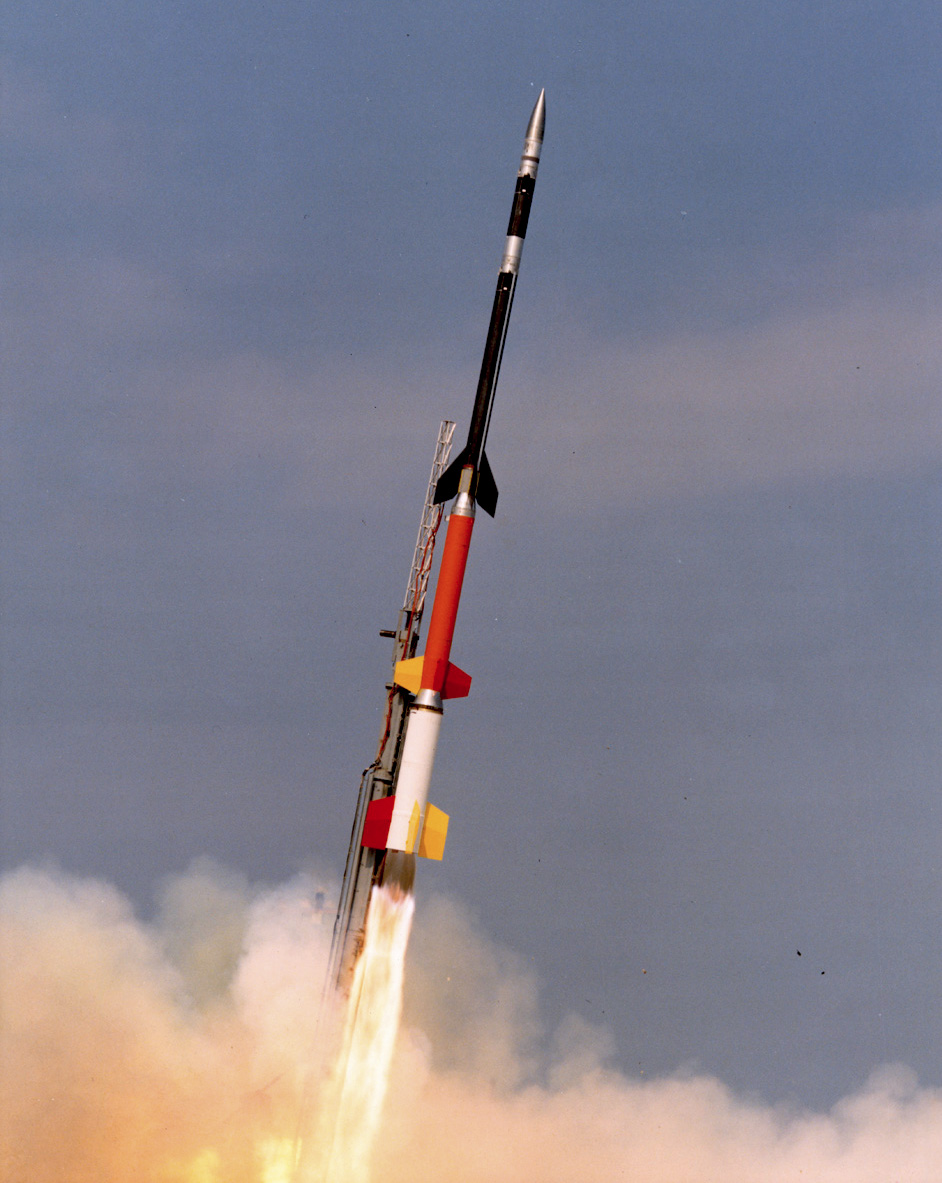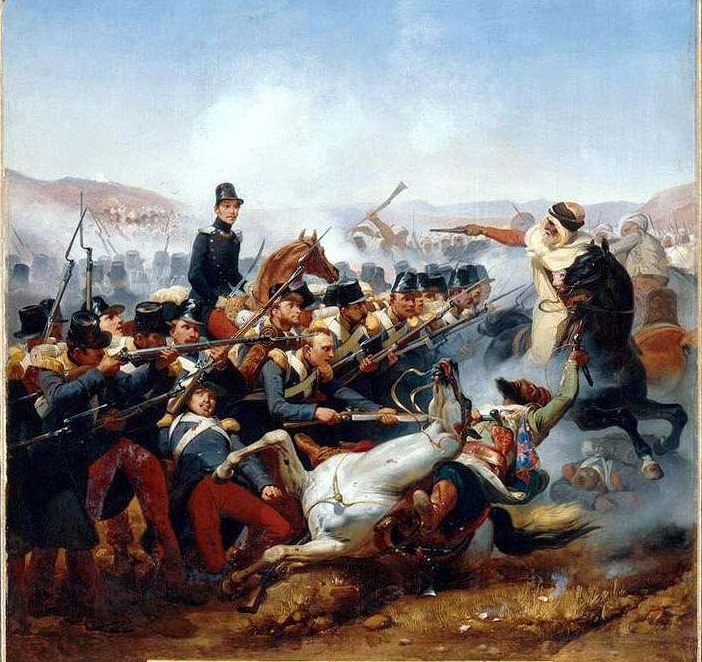|
Centre Interarmées D'essais D'engins Spéciaux
The Centre Interarmées d'Essais d'Engins Spéciaux (CIEES, ) was France's first space launch and ballistic missile testing facility. Outside France, the facility is often referred to by the name of the nearest town, Hammaguir. It was established on 24 April 1947, by ministerial decree as the Special Weapons Test Center (CEES, ''Centre d'essais d'engins spéciaux'') for use by the French Army. In 1948, it was turned over to the French Air Force, who renamed it CIEES. Its remote location in the middle of the Saharan Desert and its relative closeness to the Equator (compared with Metropolitan France) made it an attractive launch site for missiles and orbital rockets. History The origins of CIEES and the French missile and space program date to the end of the Second World War. On 12 June 1945, less than a month after V-E Day, the War Department ordered the study of self-propelled projectiles (rockets). On 13 August, the Directorate of Studies and Manufactures of Armaments (DEFA) p ... [...More Info...] [...Related Items...] OR: [Wikipedia] [Google] [Baidu] |
Hammaguir
Hammaguir (also written Hamaguir and Hammaguira) () is a village in Abadla District, Béchar Province, Algeria, south-west of Béchar. It lies on the N50 national highway between Béchar and Tindouf. The location is notable for its role in French rocketry. Hamaguir Airport is located there. Role in French rocketry and spaceflight Between 1947 and 1967 there was a rocket launch site, the Interarmy Special Vehicles Test Centre (abbreviated CIEES in French), near Hammaguir, used by France for launching sounding rockets and the satellite carrier ''"Diamant"'' between 1965 and 1967. The Diamant launch pad at Hammaguir is located a30° 46′ 41″ N, 3° 3′ 14″ W The CIEES facility was also used for testing surface-to-air and air-to-air missiles. The first French satellite Astérix was launched from there in 1965. In honor of its role in the early development of French spaceflight, its name was given to a Martian crater in 1979 and to an asteroid crater in 2009. Notab ... [...More Info...] [...Related Items...] OR: [Wikipedia] [Google] [Baidu] |
Sounding Rockets
A sounding rocket or rocketsonde, sometimes called a research rocket or a suborbital rocket, is an instrument-carrying rocket designed to take measurements and perform scientific experiments during its sub-orbital spaceflight, sub-orbital flight. The rockets are often used to launch instruments from above the surface of the Earth, the altitude generally between weather balloons and satellites; the maximum altitude for balloons is about and the minimum for satellites is approximately . Due to their suborbital flight profile, sounding rockets are often much simpler than their counterparts built for orbital flight. Certain sounding rockets have an apogee between , such as the Black Brant (rocket), Black Brant X and XII, which is the maximum apogee of their class. For certain purposes, sounding rockets may be flown to altitudes as high as to allow observing times of around 40 minutes to provide geophysical observations of the magnetosphere, ionosphere, thermosphere, and mesosphere ... [...More Info...] [...Related Items...] OR: [Wikipedia] [Google] [Baidu] |
Landes (department)
Landes (; ; ) is a department in the Nouvelle-Aquitaine region, Southwestern France, with a long coastline on the Atlantic Ocean to the west. It also borders Gers to the east, Pyrénées-Atlantiques to the south, Lot-et-Garonne to the north-east, and Gironde to the north. Located on the Atlantic coast, it had a population of 413,690 as of 2019.Populations légales 2019: 40 Landes INSEE Its is Mont-de-Marsan. The department is the second-largest department in France and it covers the [...More Info...] [...Related Items...] OR: [Wikipedia] [Google] [Baidu] |
DGA Essais De Missiles
DGA Essais de missiles (previously named CEL - Centre d'Essais des Landes) is a launch site for the test of military rockets and for launching sounding rockets in France. "DGA Essais de missiles" is situated between Biscarrosse and the Atlantic Ocean. "DGA Essais de missiles" went in service in 1967 as replacement for the former launch sites at CIEES, Hammaguir. A large number of rockets were tested from this site: Belier III, Dragon 1, Dragon 2B, Dragon 3, Rubis, Tacite, SSBS S112, Cora, Dauphin, SSBS S01, MSBS M012, MSBS M013, SSBS S02, Black Brant VC, MSBS M1, Tibère, Viper 3A, Forschungsflugkörper, MSBS M2, SSBS S2, MSBS M20, SSBS S3, Nike Orion, MSBS M4, Hades Hades (; , , later ), in the ancient Greek religion and Greek mythology, mythology, is the god of the dead and the king of the Greek underworld, underworld, with which his name became synonymous. Hades was the eldest son of Cronus and Rhea ..., Black Brant 9CM1, MSBS M45 and MSBS M51. Pads Th ... [...More Info...] [...Related Items...] OR: [Wikipedia] [Google] [Baidu] |
French Guiana
French Guiana, or Guyane in French, is an Overseas departments and regions of France, overseas department and region of France located on the northern coast of South America in the Guianas and the West Indies. Bordered by Suriname to the west and Brazil to the east and south, French Guiana covers a total area of and a land area of . As of January 2025, it is home to 292,354 people. French Guiana is the second-largest Regions of France, region in France, being approximately one-seventh the size of metropolitan France, European France, and the largest Special member state territories and the European Union, outermost region within the European Union. It has a very low population density, with only . About half of its residents live in its capital, Cayenne. Approximately 98.9% of French Guiana is covered by forests, much of it Old-growth forest, primeval Tropical rainforest, rainforest. Guiana Amazonian Park, the largest national park in the European Union covers 41% of French ... [...More Info...] [...Related Items...] OR: [Wikipedia] [Google] [Baidu] |
Kourou Space Center
The Guiana Space Centre (; CSG), also called Europe's Spaceport, is a spaceport to the northwest of Kourou in French Guiana, an overseas region of France in South America. Kourou is located approximately north of the equator at a latitude of 5°. In operation since 1968, it is a suitable location for a spaceport because of its near equatorial location and open sea to the east and north. At CSG, space launches are conducted by several European private companies and government agencies working together. The CSG land itself is managed by CNES, the French national space agency. The launch infrastructure built on the CSG land is owned by the European Space Agency. The private company Arianespace operates the launches including planning missions, handling customer relationships and overseeing the team at CSG that integrates and prepares vehicles for launch. The rockets themselves are designed and produced by other companies, ArianeGroup for the Ariane 6 and Avio for the Vega. Hi ... [...More Info...] [...Related Items...] OR: [Wikipedia] [Google] [Baidu] |
Algerian War Of Independence
The Algerian War (also known as the Algerian Revolution or the Algerian War of Independence) ''; '' (and sometimes in Algeria as the ''War of 1 November'') was an armed conflict between France and the Algerian National Liberation Front (Algeria), National Liberation Front (FLN) from 1954 to 1962, which led to Algeria winning its independence from France. * * * * * * An important decolonization war, it was a complex conflict characterized by guerrilla warfare and war crimes. The conflict also became a civil war between the different communities and within the communities. The war took place mainly on the territory of Algeria, with repercussions in metropolitan France. Effectively started by members of the FLN on 1 November 1954, during the ("Red All Saints' Day"), the conflict led to serious political crises in France, causing the fall of the Fourth French Republic, Fourth Republic (1946–58), to be replaced by the Fifth French Republic, Fifth Republic with a strengthened pres ... [...More Info...] [...Related Items...] OR: [Wikipedia] [Google] [Baidu] |
Évian Accords
The Évian Accords were a set of declarations between the French Government and the Provisional Government of the Algerian Republic on 18 March 1962 in Évian-les-Bains which outlined the agreements for Algeria's Independence alongside cooperation with France. The Accords consisted of five chapters which detailed the guarantees and principals of this Independence. The Accords ended the Algerian War with a cease-fire that was declared on the 19th March 1962, and effectively formalised the status of Algeria as an independent nation. Historical Context The start of the Algerian War in 1954 emerged from a growing Algerian nationalist movement. The population was asked to fight in the Second World War alongside the French. In exchange for their duty, they demanded more political and economic rights which were refused. The tensions between the two parties rose when the National Liberation Front (FLN) called for independence in their Declaration of 1 November 1954. The French Gov ... [...More Info...] [...Related Items...] OR: [Wikipedia] [Google] [Baidu] |
Algeria
Algeria, officially the People's Democratic Republic of Algeria, is a country in the Maghreb region of North Africa. It is bordered to Algeria–Tunisia border, the northeast by Tunisia; to Algeria–Libya border, the east by Libya; to Algeria–Niger border, the southeast by Niger; to Algeria–Western Sahara border, the southwest by Mali, Mauritania, and Western Sahara; to Algeria–Morocco border, the west by Morocco; and to the north by the Mediterranean Sea. The capital and List of cities in Algeria, largest city is Algiers, located in the far north on the Mediterranean coast. Inhabited since prehistory, Algeria has been at the crossroads of numerous cultures and civilisations, including the Phoenicians, Numidians, Ancient Rome, Romans, Vandals, and Byzantine Greeks. Its modern identity is rooted in centuries of Arab migrations to the Maghreb, Arab Muslim migration waves since Muslim conquest of the Maghreb, the seventh century and the subsequent Arabization, Arabisation ... [...More Info...] [...Related Items...] OR: [Wikipedia] [Google] [Baidu] |
2nd Foreign Infantry Regiment
The 2nd Foreign Infantry Regiment () is an infantry regiment of the Foreign Legion in the French Army. The regiment is one of two mechanized infantry regiments of the 6th Light Armoured Brigade. Since the regiment's arrival from Bonifacio in 1983, it has been stationed at Quartier Colonel de Chabrières; named in honor of Colonel de Chabrières who was shot in the chest while leading a charge of the regiment. Quartier Colonel Chabrières is situated in Nimes, a historical Roman city, in the south of France. An armored infantry regiment, equipment includes more than 135 Véhicule de l'Avant Blindé (VAB) and Véhicule Blindé Léger (VBL), to provide armoured protection of personnel during combat. The regiment also has the Véhicule blindé de combat d'infanterie (VBCI). The Regiment has responsibility for field testing new equipment for the French Army as a whole. The regiment benefits from a long tradition of conflicts and interventions. Recent engagements, from the Ba ... [...More Info...] [...Related Items...] OR: [Wikipedia] [Google] [Baidu] |
Monica (rocket)
Monica is the designation of a small French sounding rocket. It was intended as a cheaper counterpart to the relatively expensive Veronique rockets. Monica was a 3-stage rocket, with all stages burning solid fuel: the ''Melanie'' (burning Plastolite) for the first stage and ''Theodore'' and ''Oreste'' (burning Epictete) for the second and third stages. The first stage delivered 450 daN (decanewtons) for 3 seconds and the two upper stages deliver 50 daN for 15 and 5.5 seconds, respectively. It was built in several versions (Meteo, Monica I to V, MD-01, Grannos), which were between 3.05 and 6.27 m long and had a takeoff weight between 62 and 154 kg. It was launched several times between 1955 and 1962 at the CIEES launch site in Hammaguir, French Algeria, and the Ile du Levant site in France. The Monica design process encountered a number of difficulties, leading to many failed tests and the early cancellation of the program in 1962. However, elements of its design were ... [...More Info...] [...Related Items...] OR: [Wikipedia] [Google] [Baidu] |

